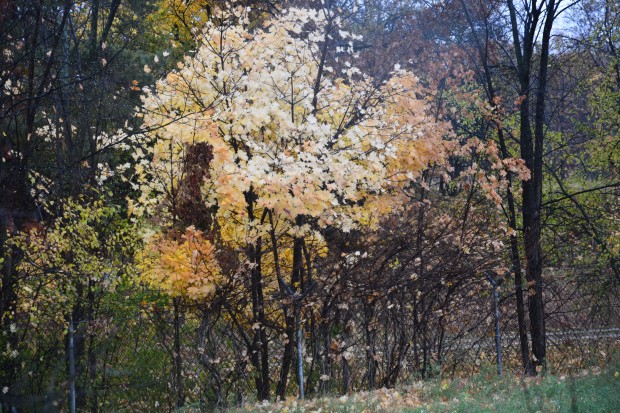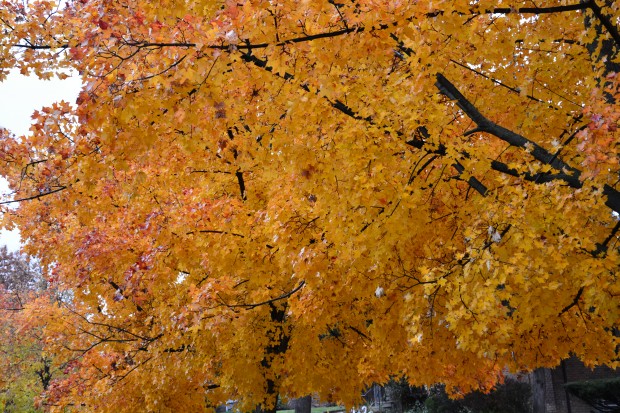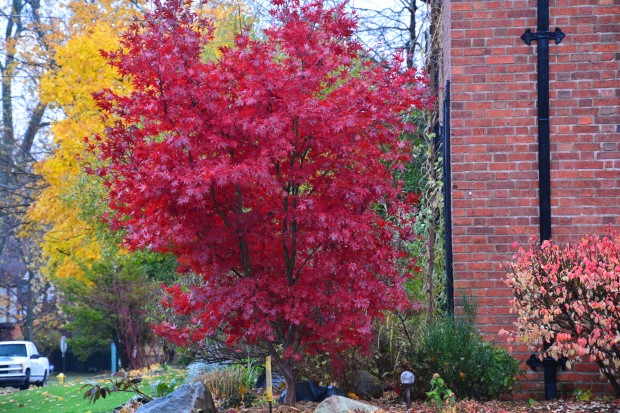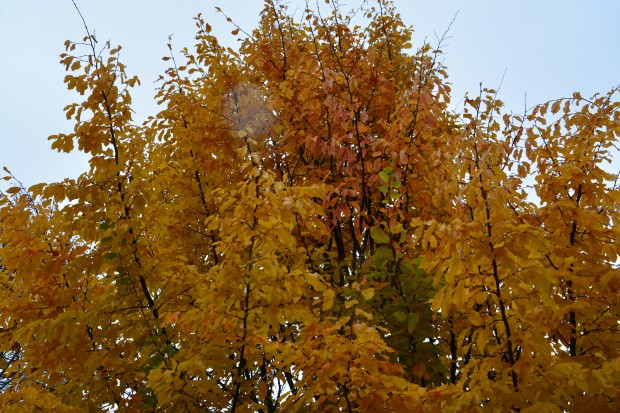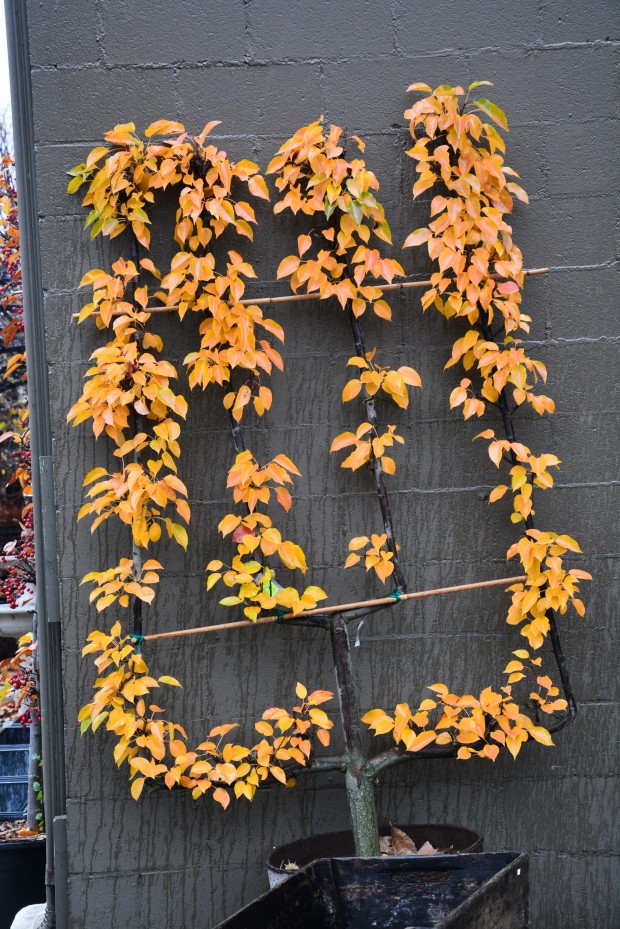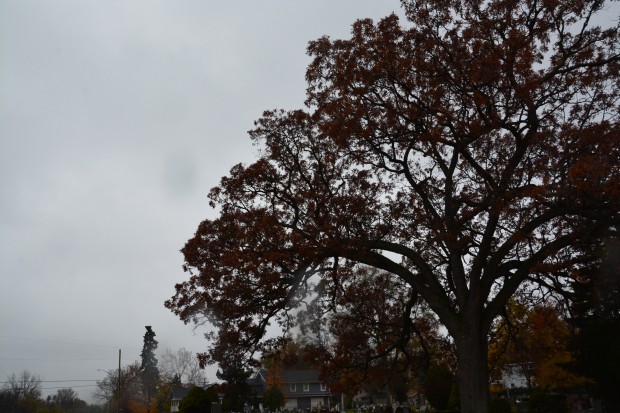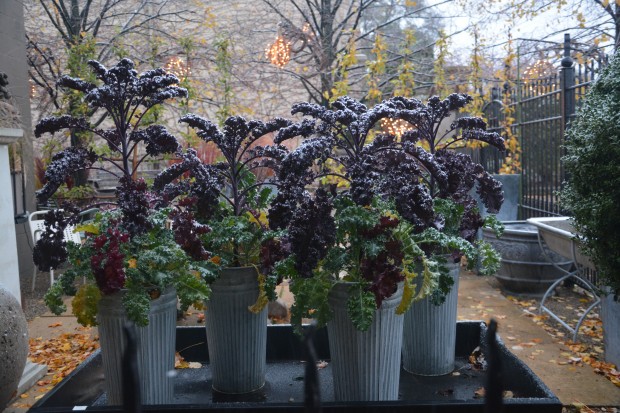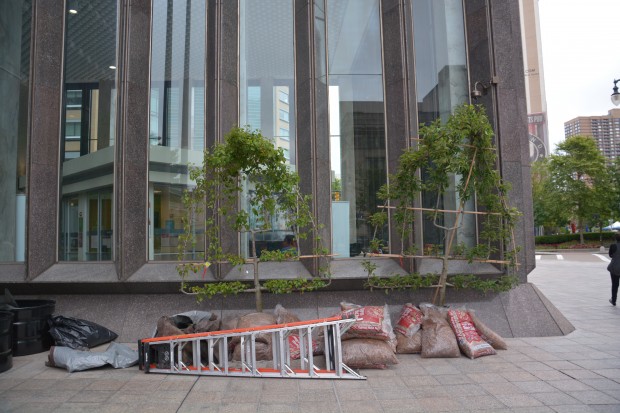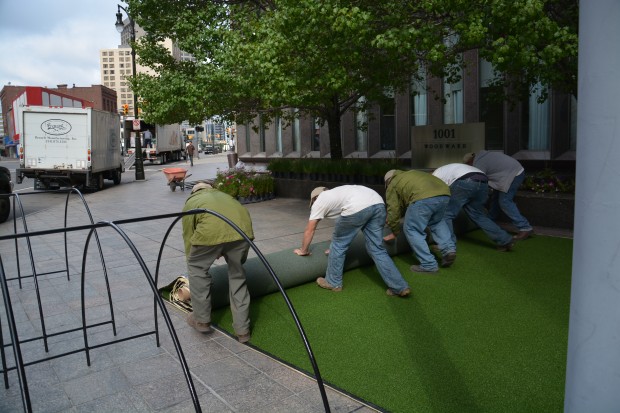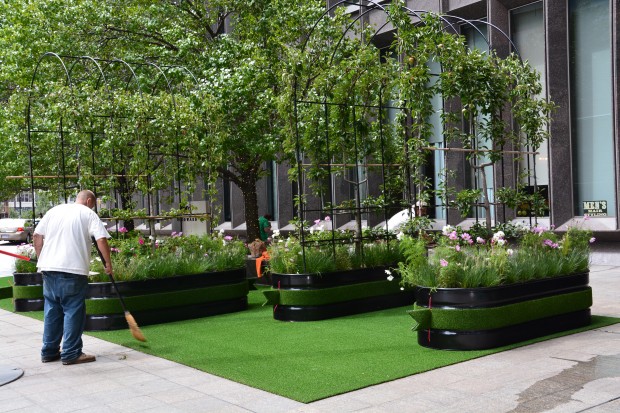At A Glance: Late Fall
Stick Week
The lion’s share of what we offer gardeners for winter and holiday pots and decor are fresh cut natural materials. The fall harvest includes any natural material which is a celebration of the garden, and a feast for admiring eyes. Just today we took delivery of this load of fresh cut birch poles in three sizes. A tree farmer far north of us waded into thigh high water to cut these birch poles for us-they have had a lot of rain this season. I greatly appreciate his effort. How thrilled I am with this picture. Big numbers of hefty birch branches are stable and striking, represented in four hefty steel boxes from our company Branch. This is a picture which tells our tale. Want to be comfortable with nature? Be exposed, learn-and understand. Looking for beauty that goes beyond any human construct-study nature.
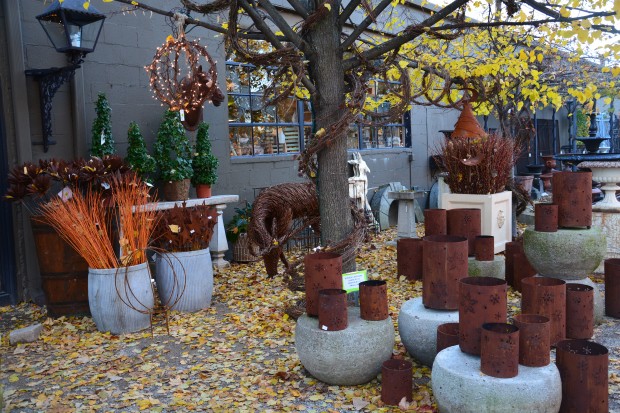 The arrival of the fresh cut twigs is a sure sign of the winter season. We deal with a number of twig farmers. There are those who grow oranges, tomatoes and avocados, but we do business with farmers that grow twigs. The art of growing twiggy shrubs with the idea of harvesting the current year’s growth at the end of the season is a practice known as coppicing. Coppice wood has a long and varied history, in both gardening and agriculture. Twiggy and woody stems have been harvested for fencing for livestock and vegetable gardens. Branched twigs provided the first plant stakes for lax growing perennials. Woven twigs make great vine supports.
The arrival of the fresh cut twigs is a sure sign of the winter season. We deal with a number of twig farmers. There are those who grow oranges, tomatoes and avocados, but we do business with farmers that grow twigs. The art of growing twiggy shrubs with the idea of harvesting the current year’s growth at the end of the season is a practice known as coppicing. Coppice wood has a long and varied history, in both gardening and agriculture. Twiggy and woody stems have been harvested for fencing for livestock and vegetable gardens. Branched twigs provided the first plant stakes for lax growing perennials. Woven twigs make great vine supports.
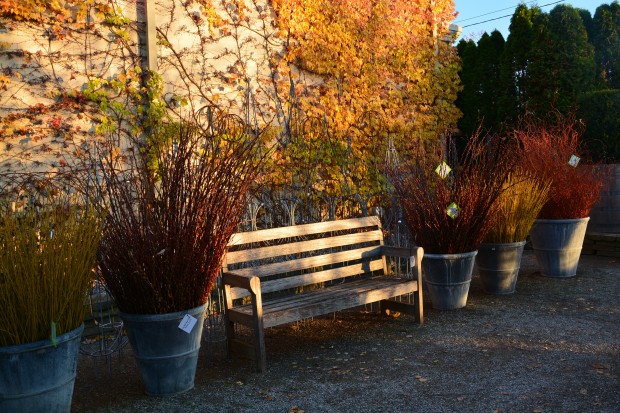 The nursery industry world wide is responsible for the breeding of shrub cultivars whose twigs have great and enduring color. Spring Meadow Nursery, in our country, is both proactive and successful in breeding shrubs of note in stem, leaf, and flower. In the late fall, I am happy to be able to offer fresh cut twigs that are enchanting in color and form. Stick week-a favorite week of my gardening year.
The nursery industry world wide is responsible for the breeding of shrub cultivars whose twigs have great and enduring color. Spring Meadow Nursery, in our country, is both proactive and successful in breeding shrubs of note in stem, leaf, and flower. In the late fall, I am happy to be able to offer fresh cut twigs that are enchanting in color and form. Stick week-a favorite week of my gardening year.
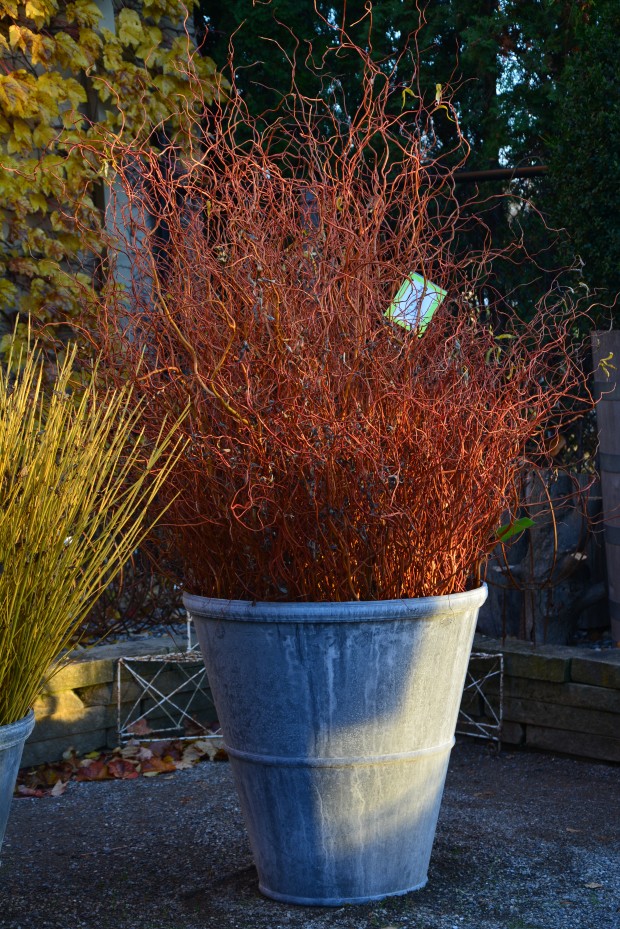 Curly copper willow might be my personal favorite. The glossy stems are cinnamon brown. Just a bunch or two can endow a winter display with a volume, texture, and motion that delights the eye. The striking color will persist in completely exposed locations throughout the toughest winter.
Curly copper willow might be my personal favorite. The glossy stems are cinnamon brown. Just a bunch or two can endow a winter display with a volume, texture, and motion that delights the eye. The striking color will persist in completely exposed locations throughout the toughest winter.
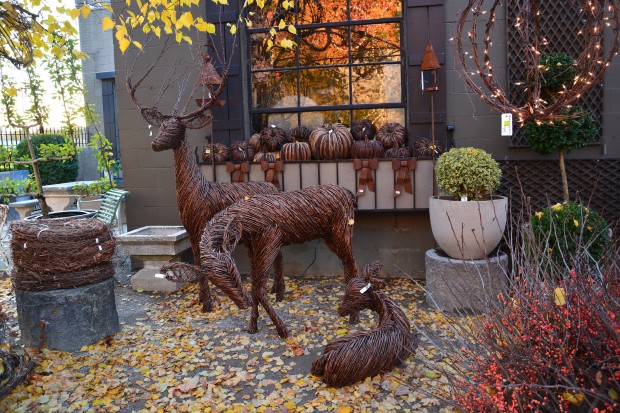 Let’s talk about grapes. A few vines some 15 years old cover the steel pergola at the shop. The sinewy vines have been trained to wind round the poles of that pergola. Grapes need a very strong structure on which to grow. The leaves cover the pergola roof during the heat of the summer. The clusters of grapes-beautiful in the early fall. Those vines, once harvested, are the basis for these deer sculptures. Our supplier owns a vineyard. She makes sculptures from the trimmings of the grape vines by forming them over handmade steel armatures.
Let’s talk about grapes. A few vines some 15 years old cover the steel pergola at the shop. The sinewy vines have been trained to wind round the poles of that pergola. Grapes need a very strong structure on which to grow. The leaves cover the pergola roof during the heat of the summer. The clusters of grapes-beautiful in the early fall. Those vines, once harvested, are the basis for these deer sculptures. Our supplier owns a vineyard. She makes sculptures from the trimmings of the grape vines by forming them over handmade steel armatures.
 The cuttings of the vines can provide a material focal point for a winter gesture. Detroit Garden Works is stocking for this winter season rolls of muscadine grape vine-twigs in the round. These long rolls of twigs in a curled form is the focus of this year’s winter decor. We interfere with the natural curves of these rolled vines as little as possible. They have a life all their own, which we mean to feature. The most beautiful celebrations of the winter season are about letting the natural materials shine.
The cuttings of the vines can provide a material focal point for a winter gesture. Detroit Garden Works is stocking for this winter season rolls of muscadine grape vine-twigs in the round. These long rolls of twigs in a curled form is the focus of this year’s winter decor. We interfere with the natural curves of these rolled vines as little as possible. They have a life all their own, which we mean to feature. The most beautiful celebrations of the winter season are about letting the natural materials shine.

When we dressed our linden trees with the grape vines, we following the vine lead. Once the vines were round the linden tree trunks, we added rusted steel lead garlands. This look to me is a good partnership.
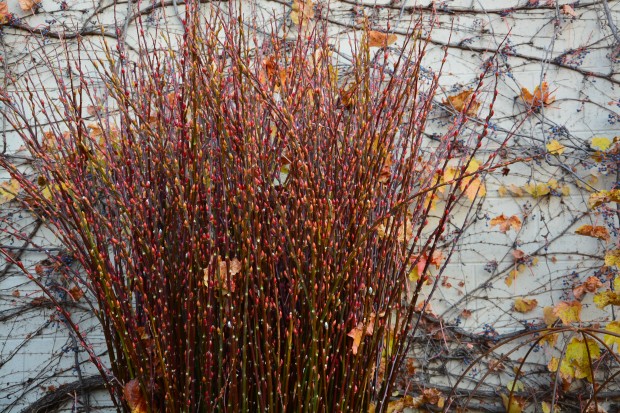 The red bud pussy willow in the fall is strikingly beautiful. I use it over and over again in winter and holiday containers. More often than not, these cut twigs survive the winter, bloom, and leaf out. Miraculous, this level of giving.
The red bud pussy willow in the fall is strikingly beautiful. I use it over and over again in winter and holiday containers. More often than not, these cut twigs survive the winter, bloom, and leaf out. Miraculous, this level of giving.
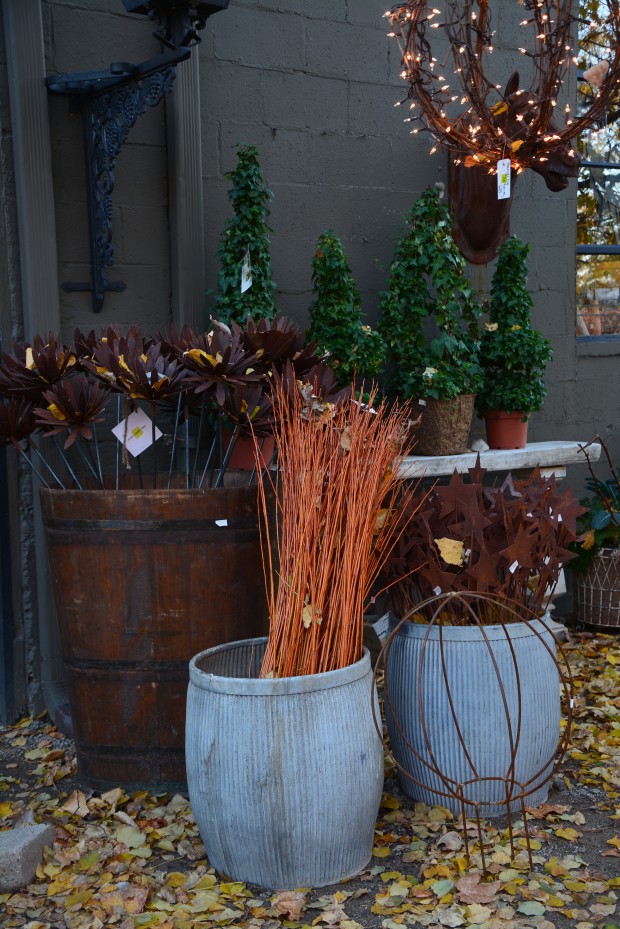 It is stick week. What sticks and twigs do you have in your garden that might provide a foundation for your winter garden expression? Looking to winter, those woody plants which have grown and matured might enlighten your winter garden.
It is stick week. What sticks and twigs do you have in your garden that might provide a foundation for your winter garden expression? Looking to winter, those woody plants which have grown and matured might enlighten your winter garden.
At A Glance: Landscape Materials

A multi-story building downtown at 1001 Woodward had an entry plaza that I would call chilly and uninviting. Bedrock Realty, the new owner, has an idea to warm things up. Kelly Deines of Rossetti Architects asked if I could put together a landscape that would include 2 pair of our espaliered arbors. We were happy to oblige. The livestock tanks-courtesy of our local farm store. The steel arbors-courtesy of Buck and his group at Branch.
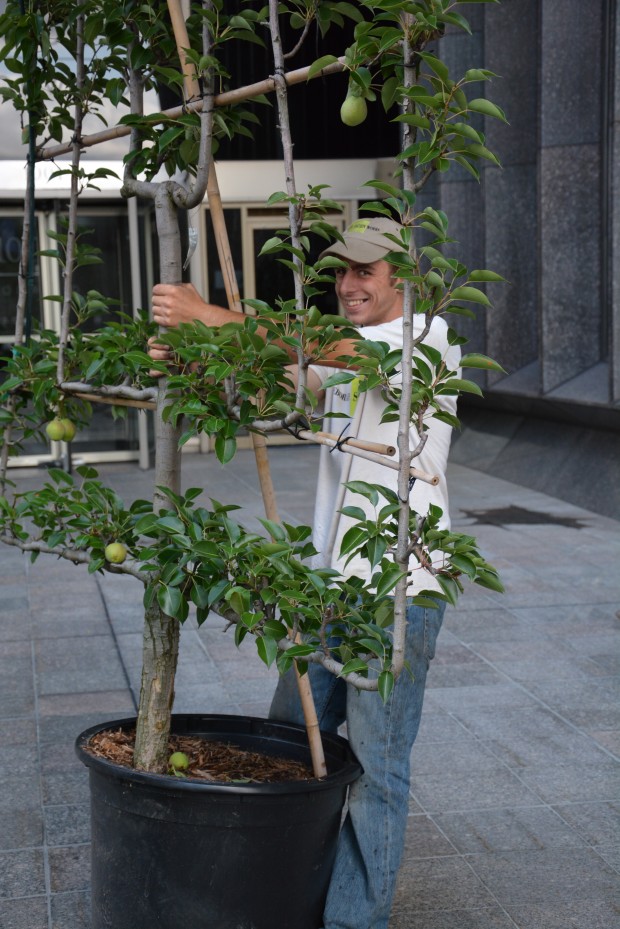 Owen was one of a crew of 7 that helped plant those trees.
Owen was one of a crew of 7 that helped plant those trees.
 cosmos and pennisetum under planting the espaliers
cosmos and pennisetum under planting the espaliers
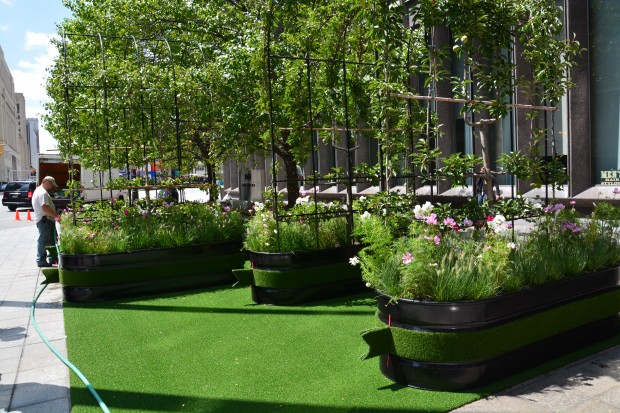 artificial turf bands on the stock tanks
artificial turf bands on the stock tanks
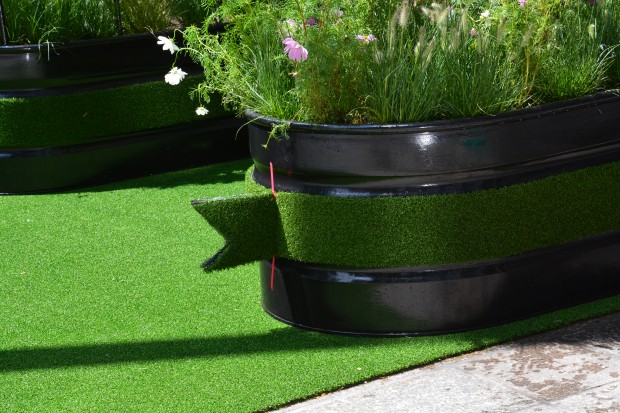 artificial turf secured with hot pink zip ties
artificial turf secured with hot pink zip ties
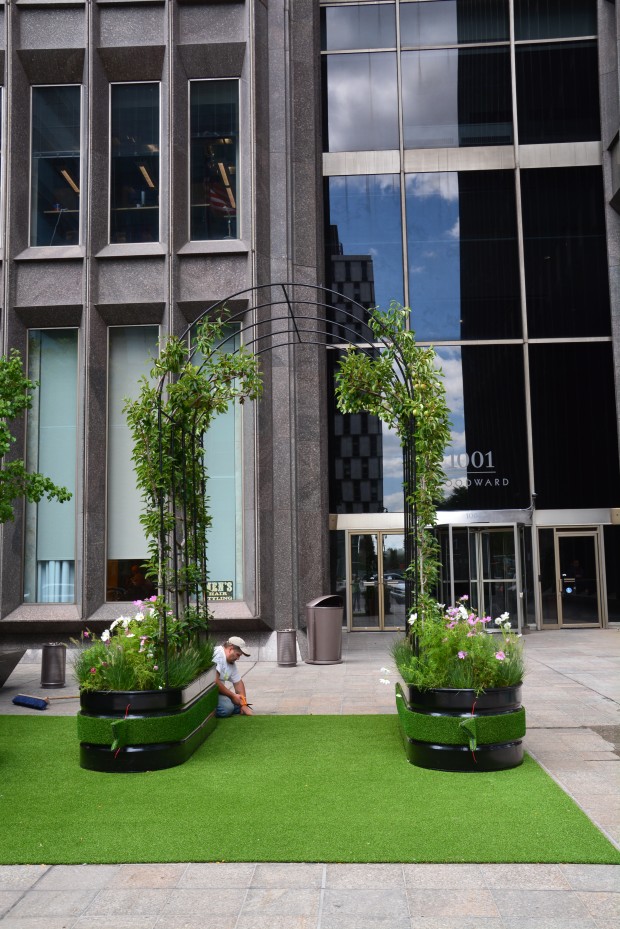 trimming the turf square and true
trimming the turf square and true
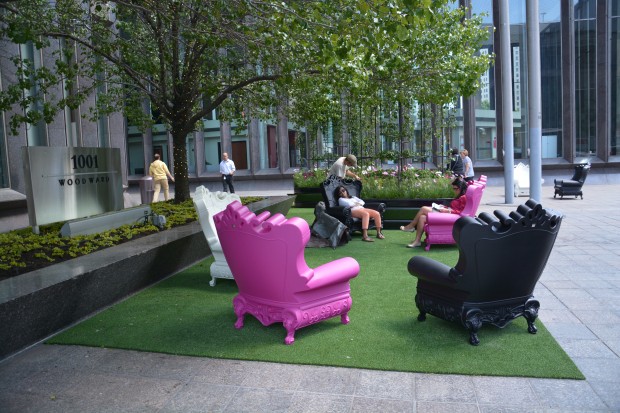 urethane furniture specified and installed by Rossetti Architects
urethane furniture specified and installed by Rossetti Architects
 The linden trees in a granite planter box were underplanted with creeping jenny. Espaliered trees, artificial turf, pink zip ties, galvanized metal livestock watering tanks, cosmos, little bunny pennisetum, molded urethane French style arm chairs and creeping jenny and a plaza typical of a vintage urban skyscraper-landscape materials that came together to create a place for people to congregate outdoors.
The linden trees in a granite planter box were underplanted with creeping jenny. Espaliered trees, artificial turf, pink zip ties, galvanized metal livestock watering tanks, cosmos, little bunny pennisetum, molded urethane French style arm chairs and creeping jenny and a plaza typical of a vintage urban skyscraper-landscape materials that came together to create a place for people to congregate outdoors.
Pruning The Boxwood
 The day the evergreens get pruned at the shop is one of my favorite days in the gardening year. Mindy from M and M Flowers comes with a crew; they make a day of it. The first order of business is the discussion. Are we pruning as usual? Is there perhaps a new shape or different direction in mind?
The day the evergreens get pruned at the shop is one of my favorite days in the gardening year. Mindy from M and M Flowers comes with a crew; they make a day of it. The first order of business is the discussion. Are we pruning as usual? Is there perhaps a new shape or different direction in mind?
 Making changes to the shape of a boxwood hedge- even an established hedge- is not difficult or impossible. It just takes time. The spheres at the corners of the parterres have not grown in evenly all around. The west side spheres get more water, as the land drains in that direction. The east side spheres are planted in what was once asphalt, and they are shaded by the lindens.
Making changes to the shape of a boxwood hedge- even an established hedge- is not difficult or impossible. It just takes time. The spheres at the corners of the parterres have not grown in evenly all around. The west side spheres get more water, as the land drains in that direction. The east side spheres are planted in what was once asphalt, and they are shaded by the lindens.
 The spheres to the east also suffered a considerable fungal infection that has been very difficult to cure. Simply put, the conditions for the 4 spheres are not at all equal. One pair is much larger and more robust than the other. So there was discussion about a moving towards a different shape at all 4 corners.
The spheres to the east also suffered a considerable fungal infection that has been very difficult to cure. Simply put, the conditions for the 4 spheres are not at all equal. One pair is much larger and more robust than the other. So there was discussion about a moving towards a different shape at all 4 corners.
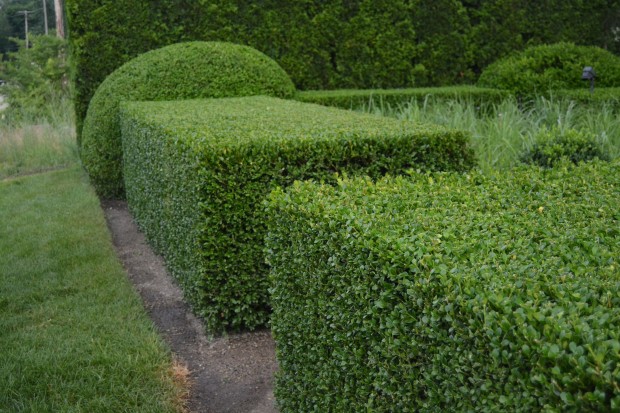 The corner spheres could be trimmed as follows. The bottom of the shrub could be brought into line with the existing rectangular hedge. The top of the shrub could be pruned as a top-knot, or a smaller sphere that would appear to sit on top of the hedge. This pruning would take a few years to accomplish, as it means pruning down to old wood. There would be bare spots that would need to grow in.
The corner spheres could be trimmed as follows. The bottom of the shrub could be brought into line with the existing rectangular hedge. The top of the shrub could be pruned as a top-knot, or a smaller sphere that would appear to sit on top of the hedge. This pruning would take a few years to accomplish, as it means pruning down to old wood. There would be bare spots that would need to grow in.
 We have some time to think this over. Though I like to wait until the spring growth is fully flushed out before any pruning is done, pruning back to bare wood as the heat of the summer season is imminent is a recipe for burn. Boxwood grows out of winter burn fairly readily, but summer burn is an unsightly state of affairs that persists.
We have some time to think this over. Though I like to wait until the spring growth is fully flushed out before any pruning is done, pruning back to bare wood as the heat of the summer season is imminent is a recipe for burn. Boxwood grows out of winter burn fairly readily, but summer burn is an unsightly state of affairs that persists.
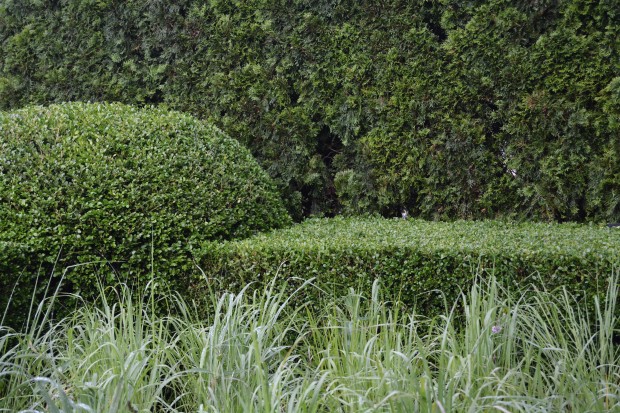 I am not so sure that it bothers me that the spheres do not match. Perfection is a state that does not really apply to living things. We may just stay the course. But there is always the option to change course in a landscape. That just takes planning, and patience.
I am not so sure that it bothers me that the spheres do not match. Perfection is a state that does not really apply to living things. We may just stay the course. But there is always the option to change course in a landscape. That just takes planning, and patience.
 This hedge has been grown from the species buxus koreana microphylla. It is a big growing boxwood. The hedge has been maintained at a height of 32″ and a width of 48″ for a number of years. Grown in full sun, it readily handles the winter wind and cold weather. The only danger posed by the winter is when we have heavy snow, the weight of which can crack the woody branches. Those cracks make the shrub more susceptible to fungal infections. It’s not always easy to decide whether to remove the snow, or let it be. Disturbing branches when they are frozen can produce more damage than the snow itself.
This hedge has been grown from the species buxus koreana microphylla. It is a big growing boxwood. The hedge has been maintained at a height of 32″ and a width of 48″ for a number of years. Grown in full sun, it readily handles the winter wind and cold weather. The only danger posed by the winter is when we have heavy snow, the weight of which can crack the woody branches. Those cracks make the shrub more susceptible to fungal infections. It’s not always easy to decide whether to remove the snow, or let it be. Disturbing branches when they are frozen can produce more damage than the snow itself.
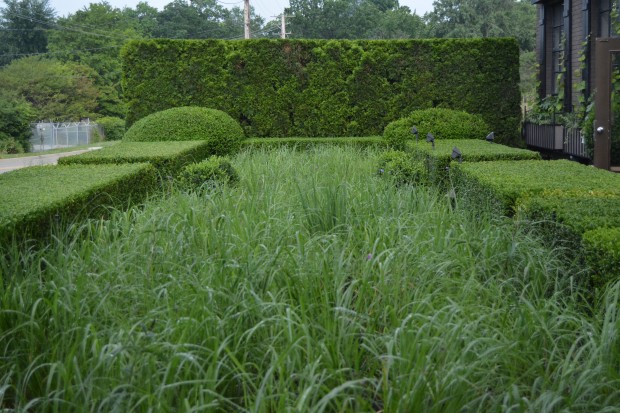 Korean boxwood does have a pronounced orangy cast in the winter, a characteristic that is not to everyone’s taste. Our most important issue is tending a hedge that is in good proportion to the size of the building. If that large overall size were not so important, “Green Velvet” boxwood maintains its green color all winter, and matures at 3′ by 3′. “Green Mountain” boxwood is virtually indistinguishable from Green Velevet, but matures at 4′ tall, and 3′ wide. “Green Gem” is a good choice, if a more refined leaf and smaller mature size is what your garden needs.
Korean boxwood does have a pronounced orangy cast in the winter, a characteristic that is not to everyone’s taste. Our most important issue is tending a hedge that is in good proportion to the size of the building. If that large overall size were not so important, “Green Velvet” boxwood maintains its green color all winter, and matures at 3′ by 3′. “Green Mountain” boxwood is virtually indistinguishable from Green Velevet, but matures at 4′ tall, and 3′ wide. “Green Gem” is a good choice, if a more refined leaf and smaller mature size is what your garden needs.
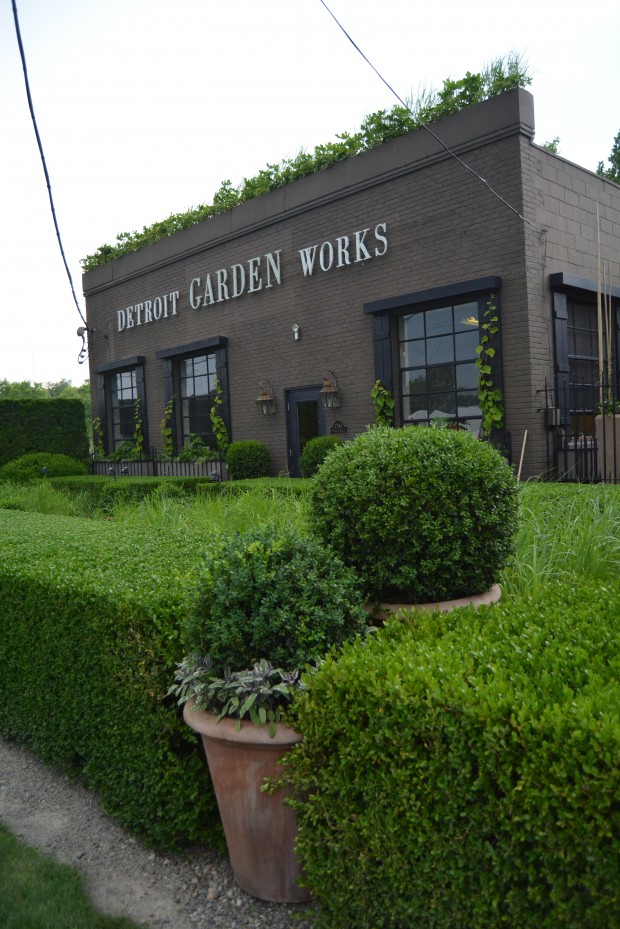 We lost 2 boxwood in the hedge over this past winter. We did have one replacement available. In this spot, we went another direction. We stitched the hedge back together, with a pair of potted boxwoods.
We lost 2 boxwood in the hedge over this past winter. We did have one replacement available. In this spot, we went another direction. We stitched the hedge back together, with a pair of potted boxwoods.
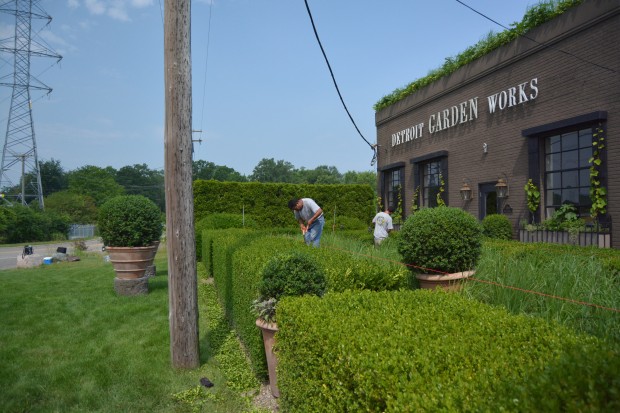 The pruning makes a world of difference in the appearance of this garden. I am enjoying that change thoroughly. If you have a boxwood hedge or specimen boxwood plants that ask for a precision pruning, I highly recommend M and M Flowers. Their work is superb. 248 340 0796.
The pruning makes a world of difference in the appearance of this garden. I am enjoying that change thoroughly. If you have a boxwood hedge or specimen boxwood plants that ask for a precision pruning, I highly recommend M and M Flowers. Their work is superb. 248 340 0796.

